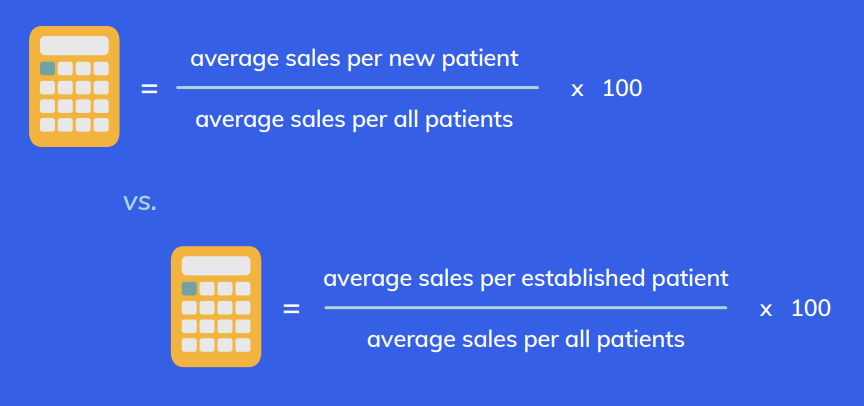How to Calculate Optometry Patient Buying Power
Usually buying power is used in investment banking circles, but it can definitely apply to purchase decisions in eyecare. Buying power refers to how much money or capacity someone has to spend. Today, we're going to focus on the buying power of new patients vs loyal/established ones.
Do new patients possess more buying power than established patients? Or vice versa? We'll unpack how you calculate these metrics in your practice as well and how you'd apply your results to your business decisions.
Are new or established patients spending more in your eyecare practice?
There are no rules regarding the amount of sales you should make from new vs. established patients, this is unique to your practice and your patient demographic. What you want to find out is how these percentages compare and change for you throughout the year or after big marketing campaigns.
 The ICD-10 codes classify new patients as those who did not have another appointment with you during the past three years. These percentages will help you understand where the majority of your sales come from and bring a sense of direction to your marketing efforts for both gaining new patients or delighting established patients. You should limit this calculation to a time period. This way, you can compare it year-over-year, quarter-over-quarter, etc. to see how your ratio changes during different seasons or after you've implemented major changes to your practice.
The ICD-10 codes classify new patients as those who did not have another appointment with you during the past three years. These percentages will help you understand where the majority of your sales come from and bring a sense of direction to your marketing efforts for both gaining new patients or delighting established patients. You should limit this calculation to a time period. This way, you can compare it year-over-year, quarter-over-quarter, etc. to see how your ratio changes during different seasons or after you've implemented major changes to your practice.
After you've completed the analysis, you can allocate the appropriate amount of your budget to campaigns for new patients and delighting loyal patients for the next few years.
To receive 7 more useful metrics like this one, download our ebook:

